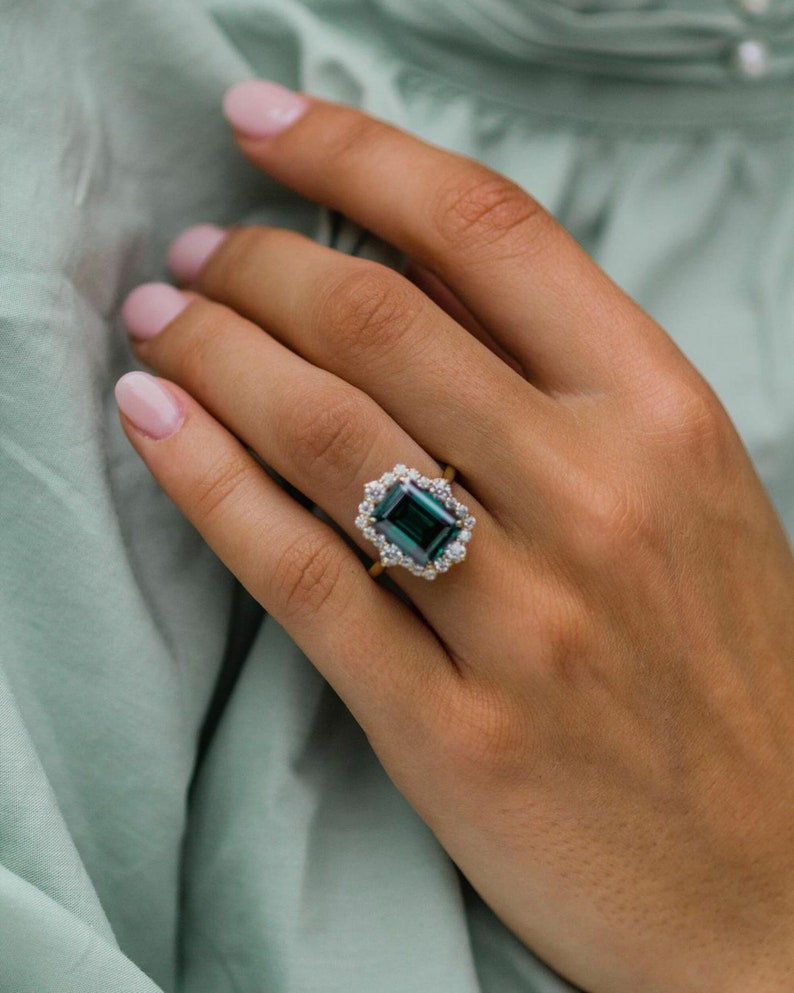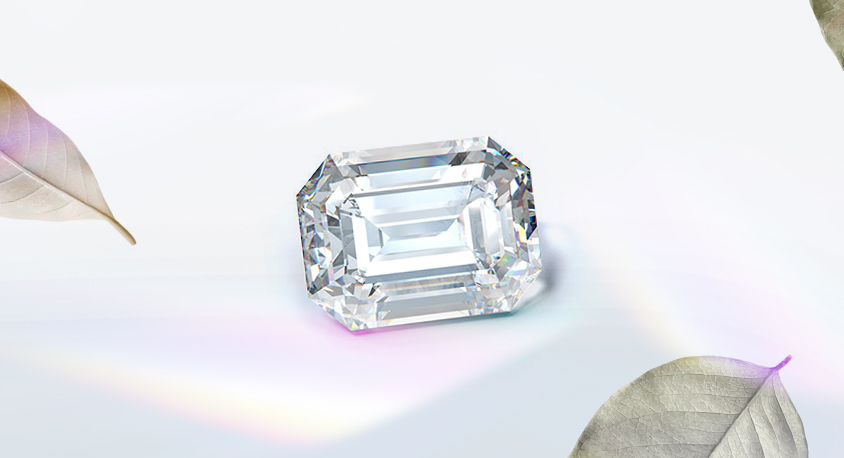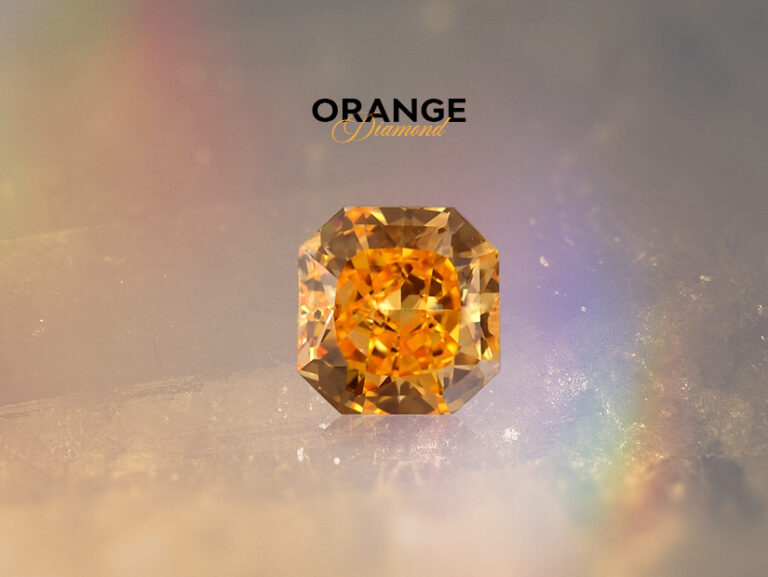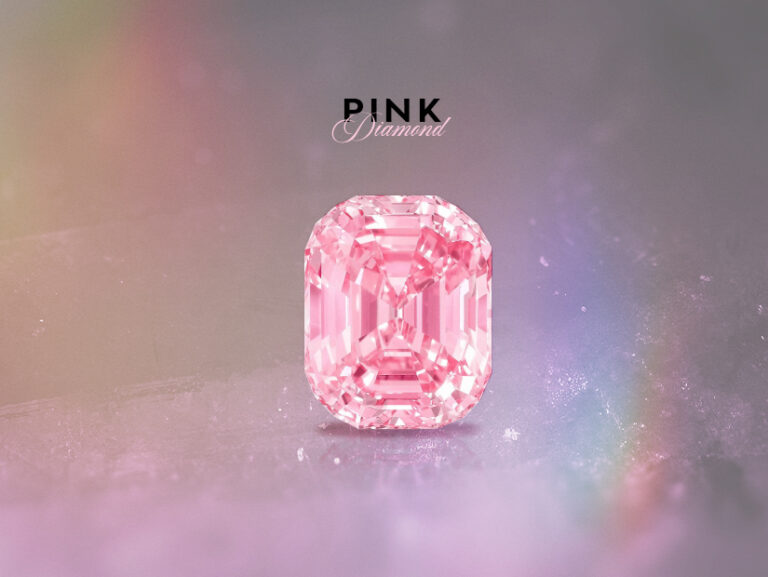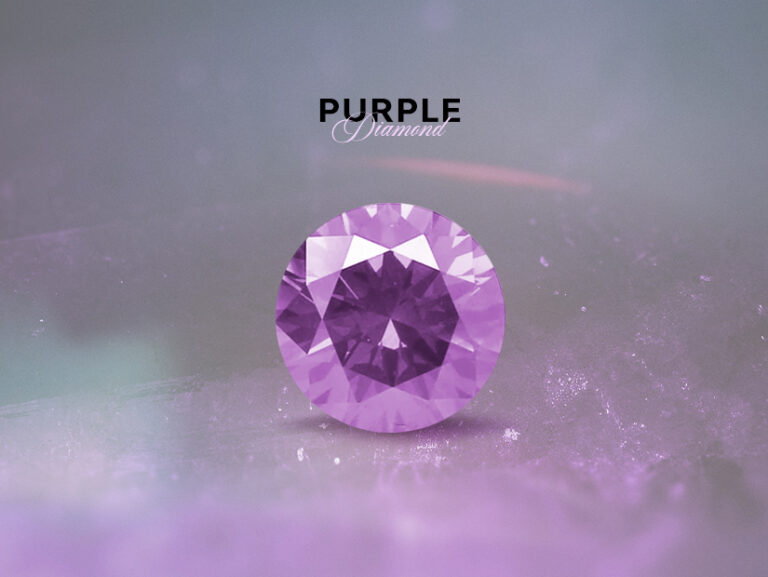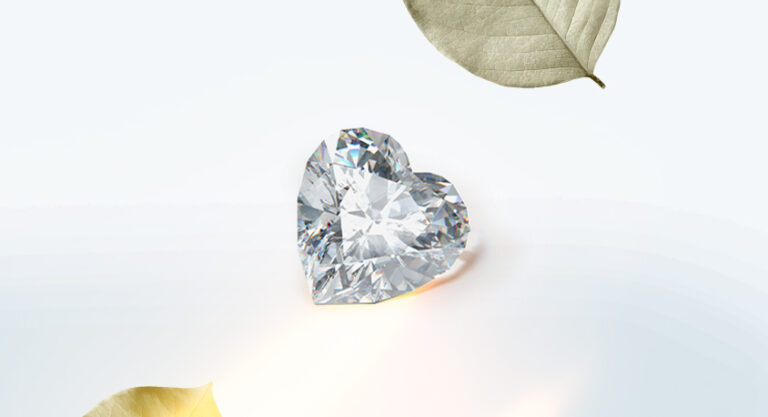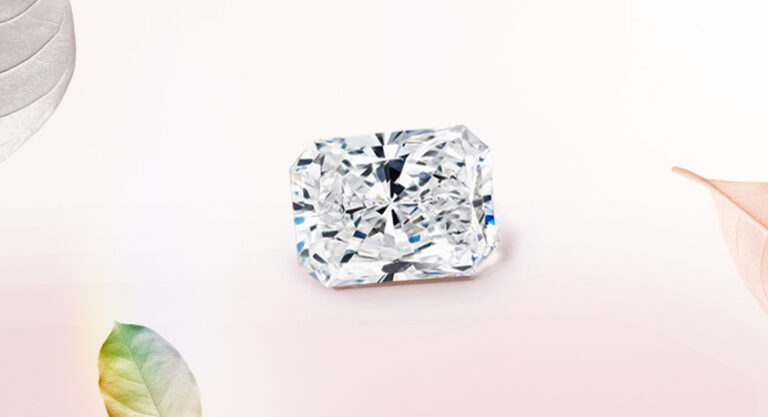Ultimate Buying Guide of Emerald Cut Diamonds
Listen & Feel Full Article…
What is Emerald Cut Diamond?
The Emerald cut diamond is a unique and elegant diamond cut. As opposed to brilliant cuts, emerald diamond cuts are step cuts. The facets of an emerald cut are rectangular, as opposed to the kite and star shapes of other loose diamonds. These step-cut facets produce a subtler display of sparkle and brilliance. Due to their long, elegant bodies, emerald diamond cuts are extremely popular.
An emerald cut diamond ring is easily recognizable: these stones appear larger than others. It’s the perfect choice for a show-stopping engagement ring. Generally, emerald cut diamonds are rectangular, but they may also be square.
Diamonds with emerald cut tables and lack of brillianteering appear best in higher clarities because inclusions can’t be hidden. Their color handling is better than other fancy shapes. It’s okay to choose a diamond with a lower color. The combination of these attributes can further increase the effectiveness of your budget. When you choose an emerald cut diamond with a lower color, you can save some money, even though a diamond with a higher clarity will cost more.
The 4C’s of Emerald Cut Diamonds
Cut
The cut grading for fancy shapes won’t be offered by certification agencies like GIA because there’s no industry standard. Emerald cut diamonds do not have the same brilliance as most other diamond shapes. The step cuts provide a subtle sparkle through facets that create an optical illusion similar to a hall of mirrors.
In contrast to brilliant cutting styles applied to round cut diamonds and cushion cut diamonds, stacked terraces and large parallel facets create a scintillation pattern. The facets of an emerald cut diamond do not produce sparkly light but rather flash from time to time due to its step cut. Flashes of white light complement every step.
The emerald cut diamond is widely recognized as rectangular but can also exist as square. Classic emerald cut diamond ratios range from 1.30 to 1.50. The majority of people choose a ratio between 1.3 and 1.4. Dimensions and proportions play an important role as well.
Color
In an emerald cut, the color will be more apparent. Other fancy shapes don’t display as much color as the large table and step cuts, making it easier for the naked eye to see the color.
A diamond with a color grade I or lower will have a yellowish tint. Color grades G or better are less likely to be noticed by the naked eye. The best emerald cut should be at or above a G color for quality and value.
The metal for your setting should also be considered when choosing a color. A G color grade or better will radiate white color if you choose platinum or white gold. You’ll benefit from the warm tones if you choose yellow or rose gold.
Clarity
The emerald cut gives you a clear, unobstructed view into the center of the stone. It will be easy to see any inclusions in this middle area. The faceting style of step cut diamonds cannot mask imperfections in the stone since they are not as brilliantly cut as brilliant cut diamonds.
An emerald cut diamond’s clarity is an important factor to consider. Brilliant cut stones are generally brighter and fierier than step cut stones. There is no light scattering in the cut, meaning inclusions won’t be hidden.
Since emerald cut diamonds can clearly show inclusions, VS1 clarity or higher is usually recommended for quality stones. To make sure a diamond looks clean, it’s always important to see it in person. When inclusions are in the stone, it is best if they are not in the center. Viewing them from a distance will provide the most coverage.
An emerald cut diamond with VS2 clarity appears eye-clean in a round brilliant cut, but one can easily see the black inclusions in this cut. Emerald cut diamonds are safer with VVS2 clarity diamonds. Diamonds of VS1 clarity can appear eye clean in some cases, but not always.
Carat
There are approximately 3% of diamonds on the market with the emerald cut. A polished emerald cut diamond also exhibits a higher yield on cutting, meaning that the least weight is lost during the cutting process. The emerald cut is cheaper to cut than a round brilliant.
Although emerald cut diamonds are less popular than round brilliants, they’re still available. Emerald cut diamonds come in a variety of carat sizes, even bigger ones. Despite the quality differences, big carats are available, and the price increases exponentially with every full carat.
Pricing of Emerald Cut Diamonds
Emerald cut diamonds are generally 20-30% less expensive than round cut diamonds, which are the most popular and costly. It is also worth noting that prices for a 1 carat emerald cut diamond vary widely depending on its quality grading.
Choosing an emerald cut diamond that’s D color and Internally Flawless clarity won’t necessarily result in a more beautiful diamond than an F color, VS1 clarity diamond. A D/IF diamond may have the technical qualifications, but an F/VS1 diamond could have a more brilliant appearance and even better brilliance than a D/IF diamond.
Best Settings for Emerald Cut Diamonds
Solitaire Settings
Solitaire settings sometimes referred to as prong settings, are a classic choice many people prefer. This setting features a plain band that is centered around the diamond. The beauty of the stone will be visible from all angles when set with prongs, which are the least obstructive.
With prong settings, step cuts like the emerald cut will reflect more light, creating the illusion of a hall of mirrors, which is part of their appeal. A diamond setting can have anywhere from four to eight prongs, depending on its size.

Pavé Settings
Pavé settings are another popular option if you’re looking for something more intricate than a solitaire. The ring’s band is paved with tiny diamonds, adding extra sparkle to the ring. When choosing a pave setting, you have more creative freedom because they range from classic styles to more whimsical designs.
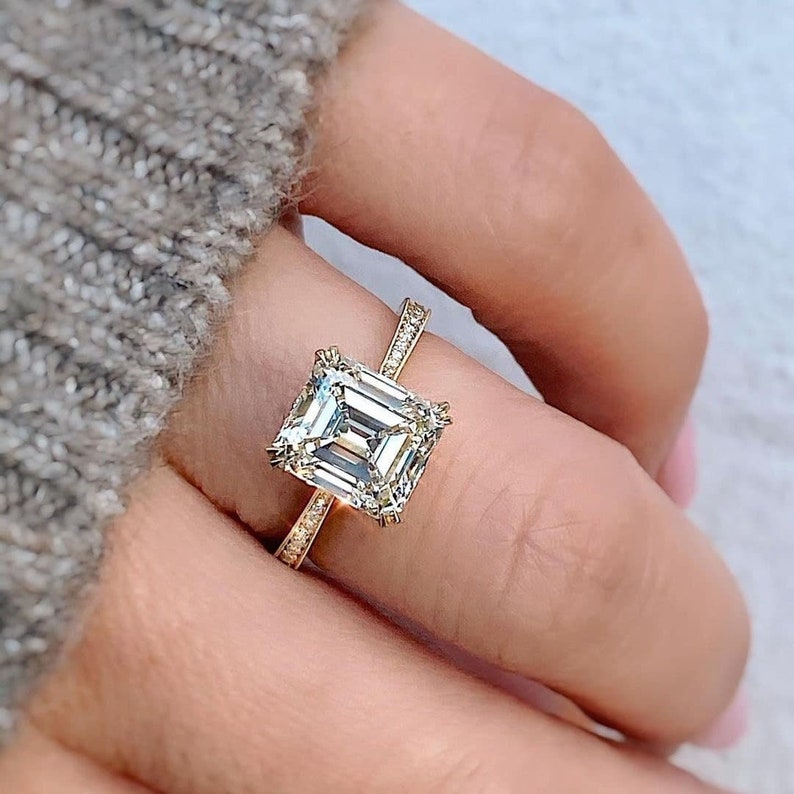
Halo Settings
Halo settings are also popular at the moment. Smaller accent diamonds in a halo surround your center stone. With halo settings, emerald cut diamonds can have more sparkle than without them.
A halo setting can also enlarge a smaller center stone, which can be advantageous if you purchase a smaller stone. A halo setting can also protect your emerald cut diamond better than a prong setting since it protects all the edges.
